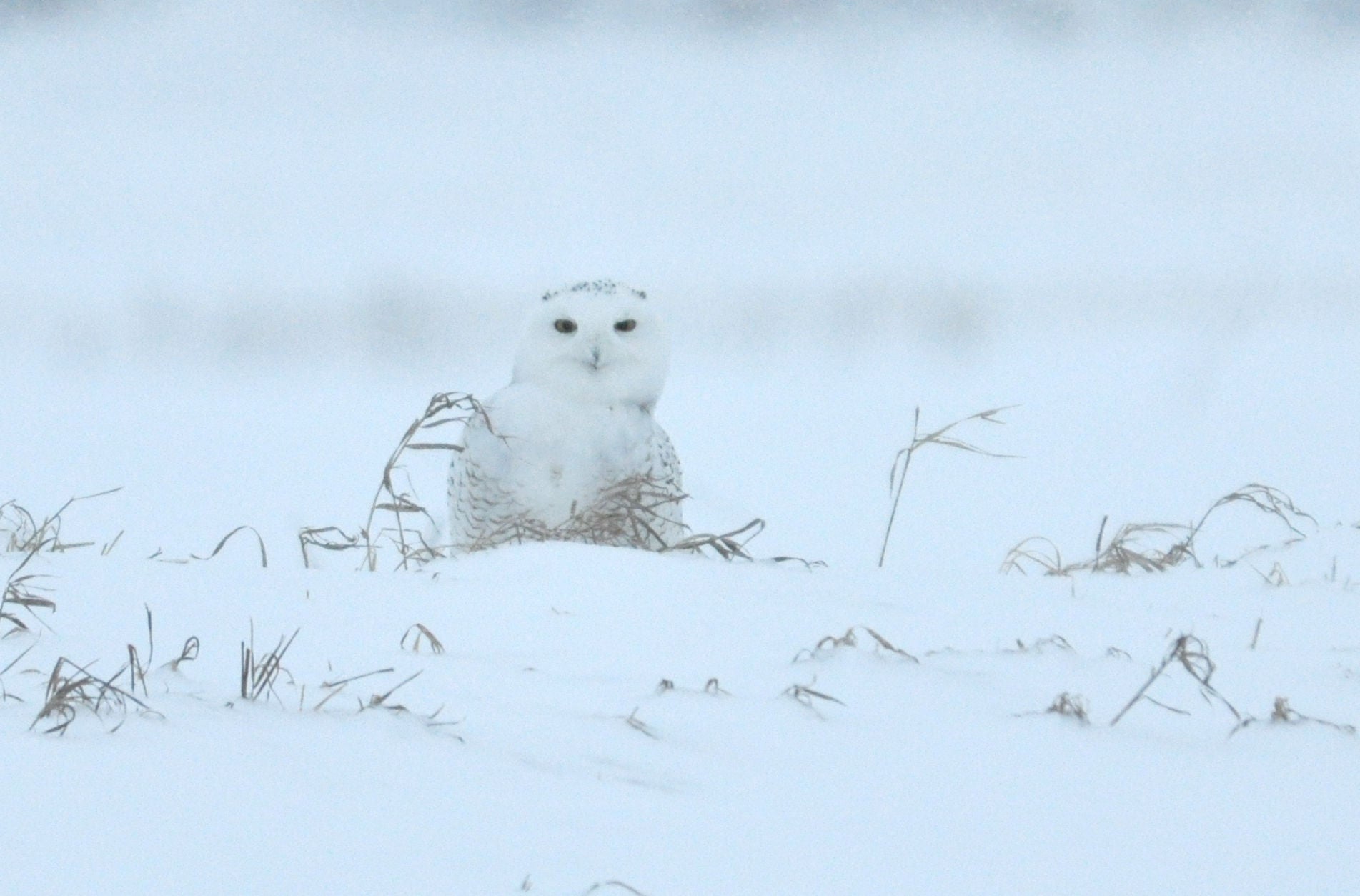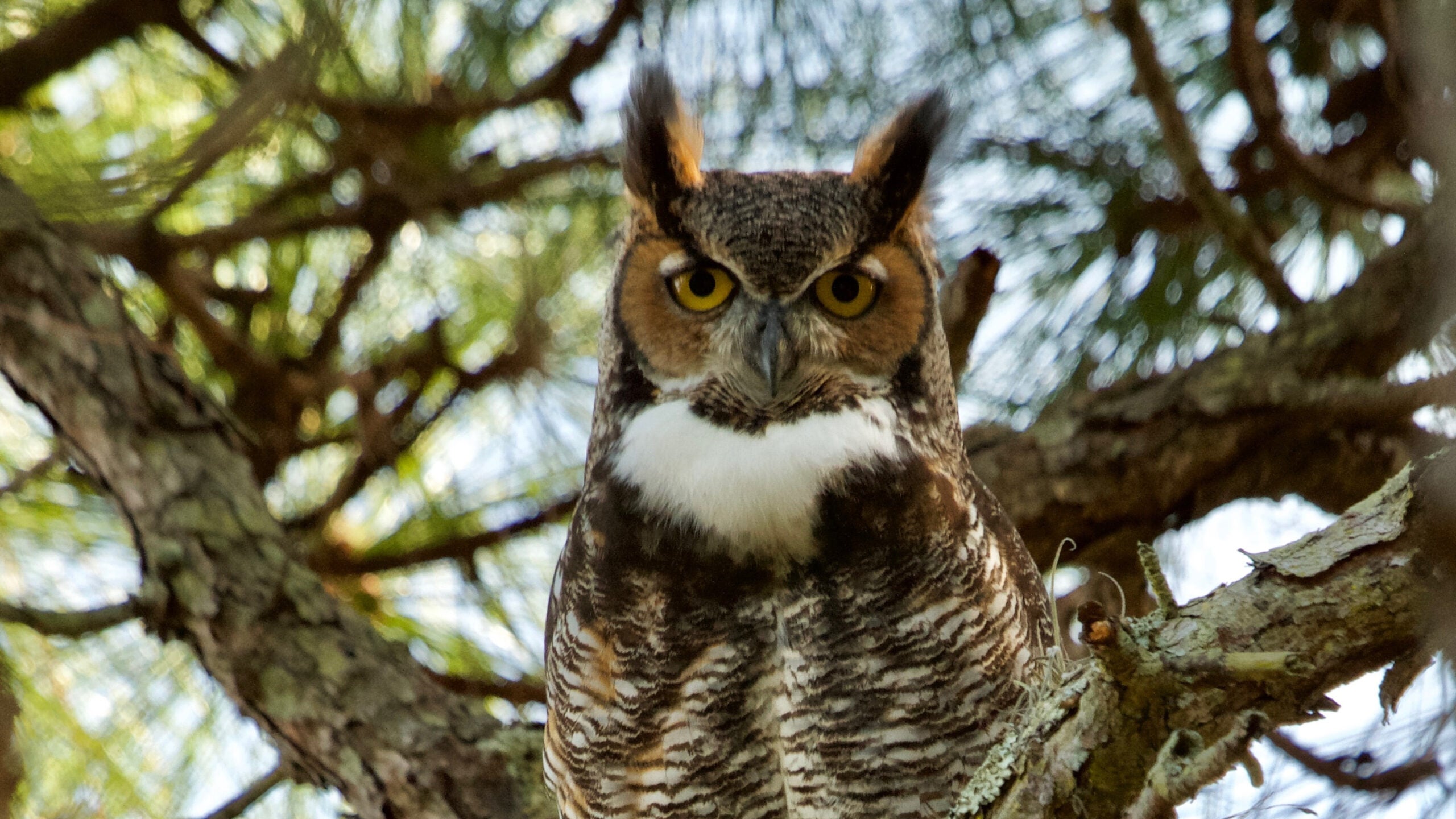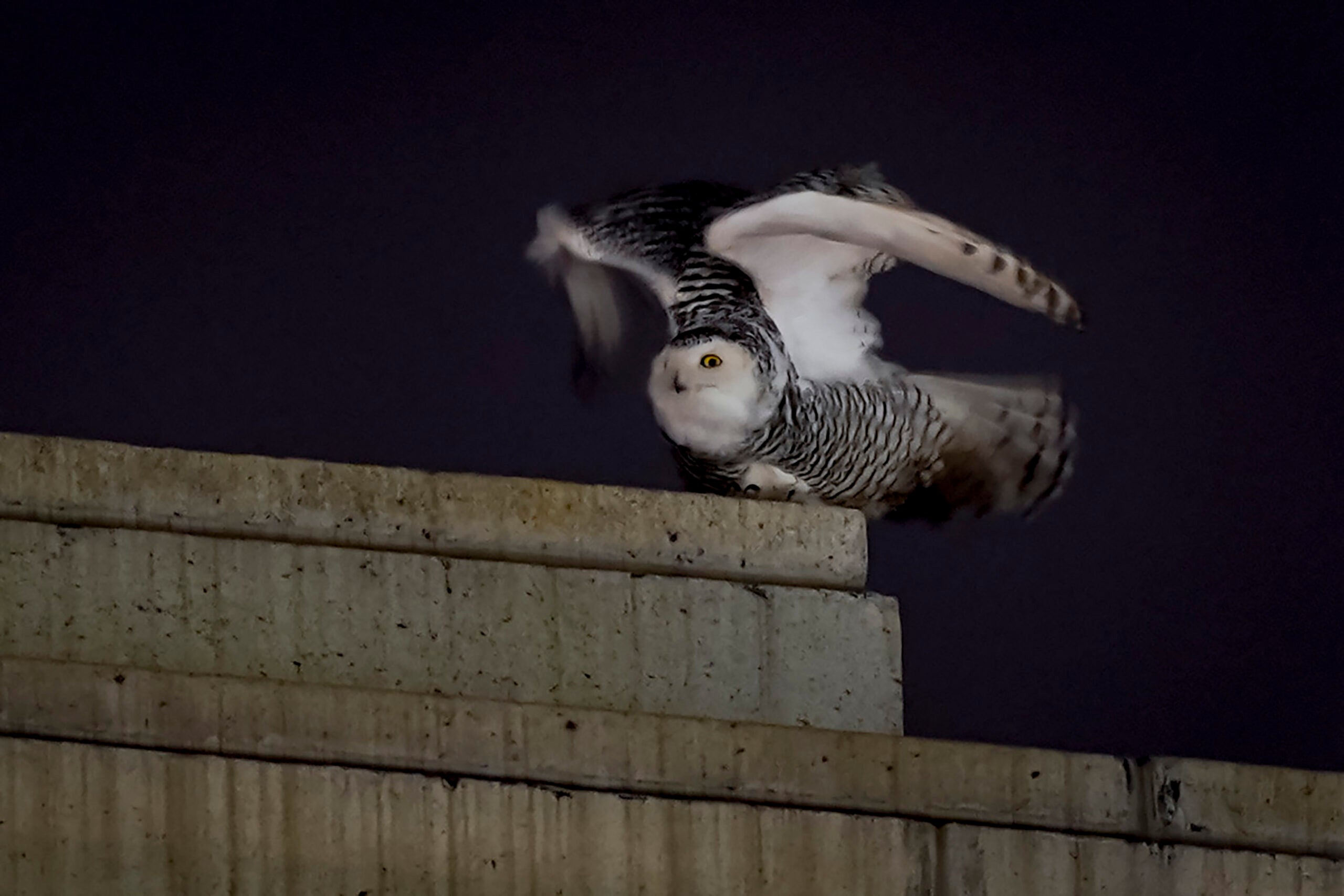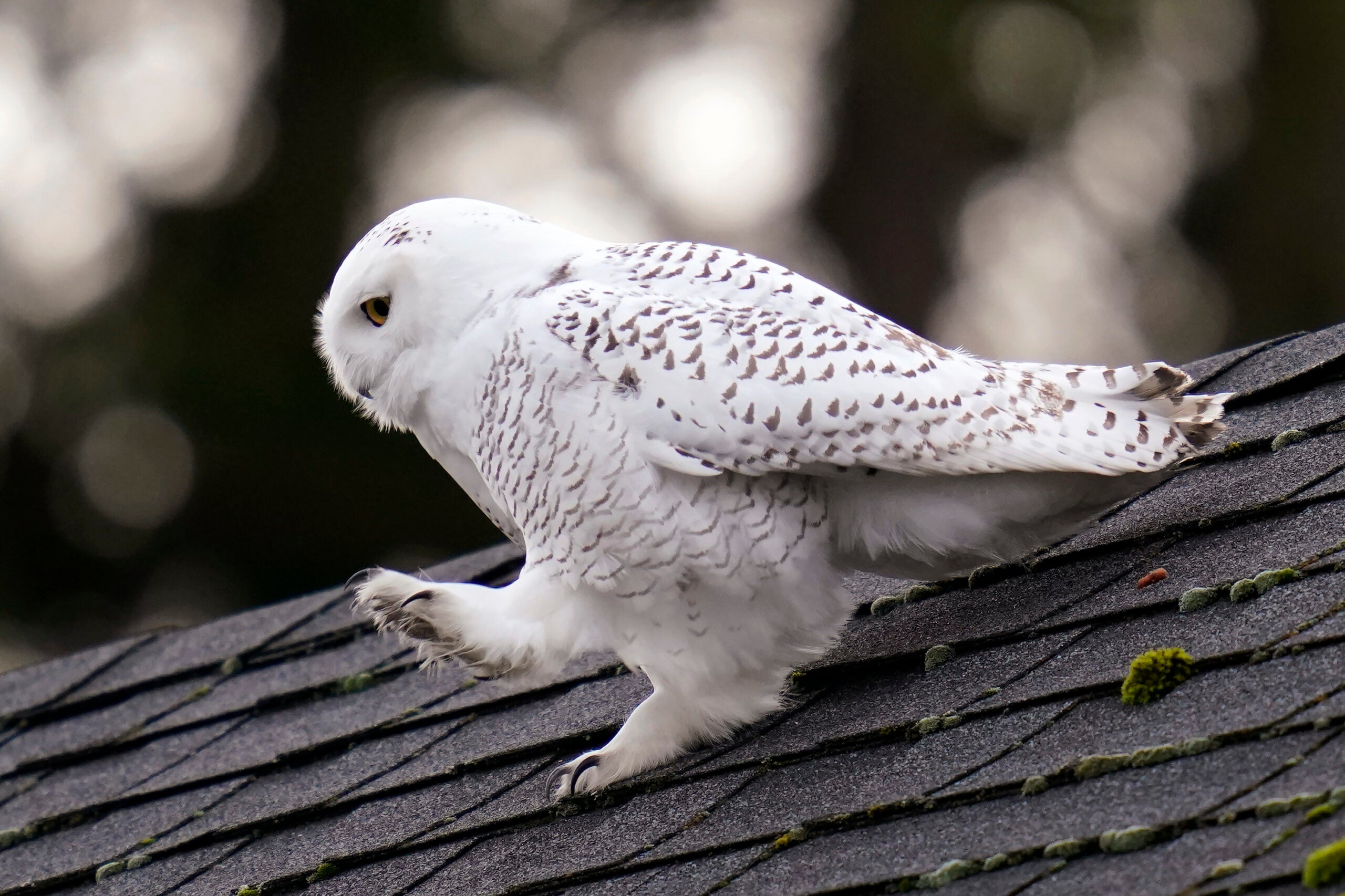Snowy Owls have again flown to Wisconsin in sizable numbers. The birds usually stay far north of the Badger State, but the state Department of Natural Resources said this week that about 270 of the large, mostly-white owls have been seen here, making this the most recent of several winters that the count of Snowy Owls is up. Significant numbers of bird watchers and scientists are paying attention.
Just east of the Horicon National Wildlife Refuge last Saturday afternoon, about 30 drivers park their vehicles on a town road. The caravan has braved ice, wind, and light snow to come see a Snowy Owl known to hang out in the area, and spotted earlier in the day by a volunteer birder.
The tip is correct, and people get out of their cars to take a look across about 100 yards of a snow-covered farm field. Horicon Marsh Bird Club President Jeff Bahls points out the roughly two-foot tall owl.
Stay informed on the latest news
Sign up for WPR’s email newsletter.
“He’s just kind of hunkered down,” Bahls said to the birders. “Now, you notice the wind’s out of the south, and he’s on the north side of that stump. He’s probably in a pretty good spot, blocking a little bit of wind, he’s got a good place to see. This is his roost, so he’s chilling now.”
People look at the Snowy Owl through binoculars or other viewing devices. A Madison couple who give their names as Laura and Dylan say this is the first “Snowy” they’ve seen.
Dylan: “We’ve tried three or four times before to see Snowy Owls at Governor Dodge and its neighborhood in past years and we’ve never succeeded.”
Laura: “As I just saw in the scope, they’re just beautiful birds.”
The owl also gave the birdwatchers another thrill by flying, and showing off its four-foot wingspan.
The Snowy Owls aren’t just at Horicon, of course. A birders’ map at ebird.org shows reports of the owls across most of Wisconsin, and a scientific collaboration called Project Snowstorm notes thousands of snowys, called an “irruption,” from Minnesota to Newfoundland.
Project naturalist Scott Weidensaul says no one knows why so many owls have come south out of the Arctic. But, he says, it helped that adult owls had many lemmings to eat in northern Canada last summer, laid lots of eggs, and had many baby owls survive. Weidensaul says the southerly migration is a little mysterious.
“It may have had something to do with an unusually snowy cold winter in the eastern Canadian Arctic that hit early with very deep snowpacks, so the owls weren’t able to get the lemmings as easily as possible,” Weidensaul said. “It may have had something to do with prevailing winds. One of the charms about these irruptions is that they’re completely unpredictable.”
Project Snowstorm and its local partners have placed tiny transmitters on three Snowy Owls in Wisconsin, near Wisconsin Rapids, Appleton and Kewaunee. Weidensaul says so far, the birds are staying within a few miles of where they were tagged.
“They are obviously finding a landscape that appeals to them, because they’re looking for places that are kind of wide open and flat: relatively treeless,” he said, “like the Arctic tundra they came from.”
Weidensaul says the three birds are also finding a lot of food: probably rodents.
This winter’s Snowy Owl irruption helped bring about 75 people to an annual “Owl Prowl” the DNR offers at Horicon every year. Last Saturday night, people heard a talk about owls, got to see a stuffed Snowy recently found dead, and join DNR Wildlife Educator Liz Herzmann on a hike through the marsh to call for owls found in Wisconsin. She played a recording of a screech owl, and imitated the trill of a screech. (You can hear Snowy Owl sounds online here.)
No owls called back that night, but naturalists say you have about another month or so in Wisconsin to look, call or listen for the Snowy Owl, before the Arctic visitors head north.
Wisconsin Public Radio, © Copyright 2024, Board of Regents of the University of Wisconsin System and Wisconsin Educational Communications Board.




